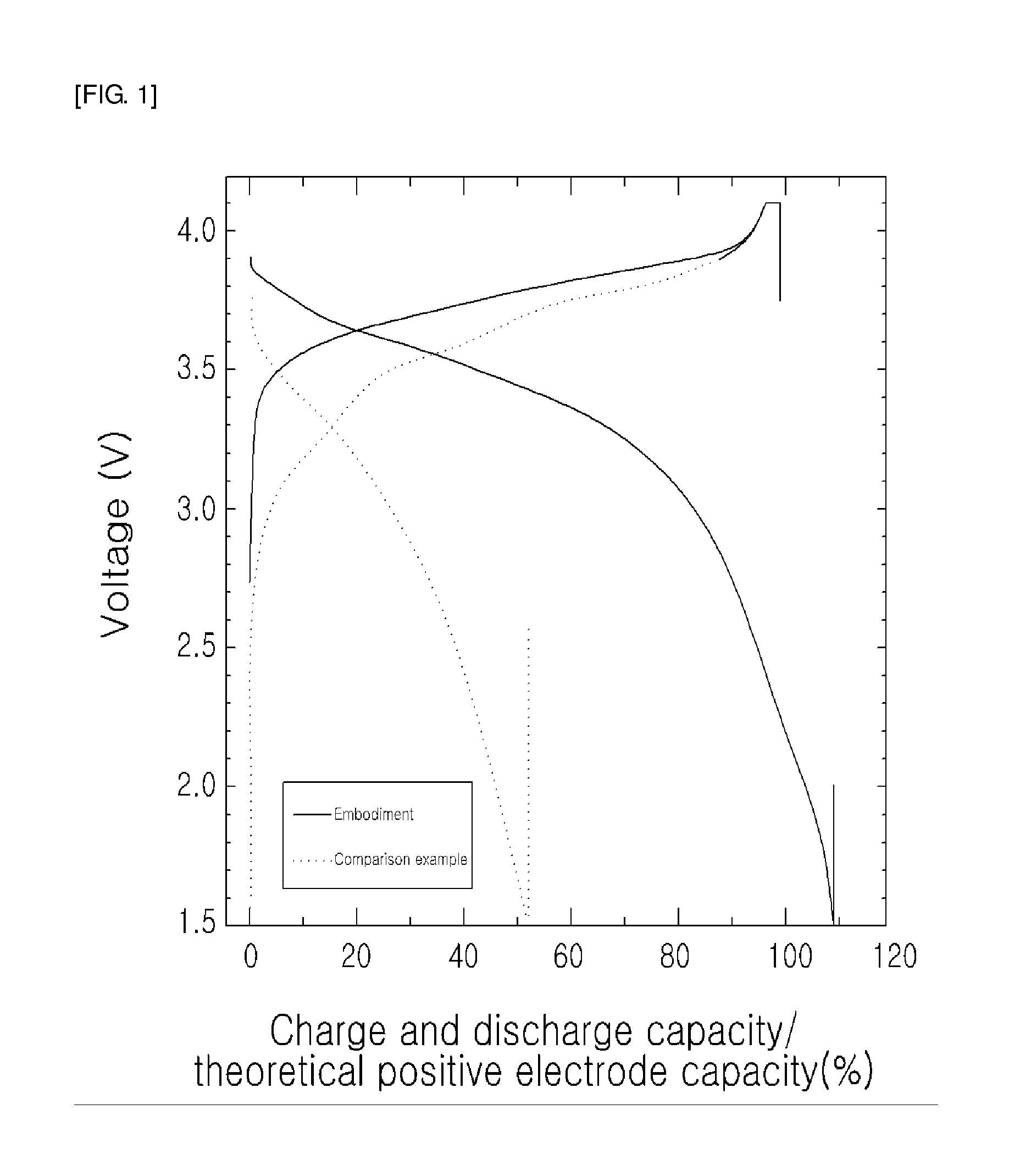Lithium secondary battery with high energy density
- Summary
- Abstract
- Description
- Claims
- Application Information
AI Technical Summary
Benefits of technology
Problems solved by technology
Method used
Image
Examples
embodiment
[0045]The positive electrode and the negative electrode of the lithium secondary battery were fabricated using the following method.
[0046](1) Manufacture of Negative Electrode
[0047]The negative electrode plate, including a copper (Cu) current collection plate of 10 μm in thickness and coating layers on both surfaces, was fabricated. Here, the coating layer was made of SiO having a capacity per unit weight of 1200 mAh / g and an initial irreversible capacity of 800 mAh / g, a carbon-based material having a capacity of about 300 mAh / g and an initial irreversible capacity of 30 mAh / g, a rubber component functioning as a binder, CMS, and conductive carbon acetylene black. In this case, SiO was 40%, the carbon-based material was 50%, the rubber component was 4%, CMC was 4%, and the conductive carbon acetylene black was 2%, of a total percentage of the coating layer. Further, the coating layer was controlled to have a reversible lithium storage and discharge ability of 3 mAh / cm2. Next, the ne...
PUM
| Property | Measurement | Unit |
|---|---|---|
| Fraction | aaaaa | aaaaa |
| Fraction | aaaaa | aaaaa |
| Area | aaaaa | aaaaa |
Abstract
Description
Claims
Application Information
 Login to View More
Login to View More - R&D
- Intellectual Property
- Life Sciences
- Materials
- Tech Scout
- Unparalleled Data Quality
- Higher Quality Content
- 60% Fewer Hallucinations
Browse by: Latest US Patents, China's latest patents, Technical Efficacy Thesaurus, Application Domain, Technology Topic, Popular Technical Reports.
© 2025 PatSnap. All rights reserved.Legal|Privacy policy|Modern Slavery Act Transparency Statement|Sitemap|About US| Contact US: help@patsnap.com

